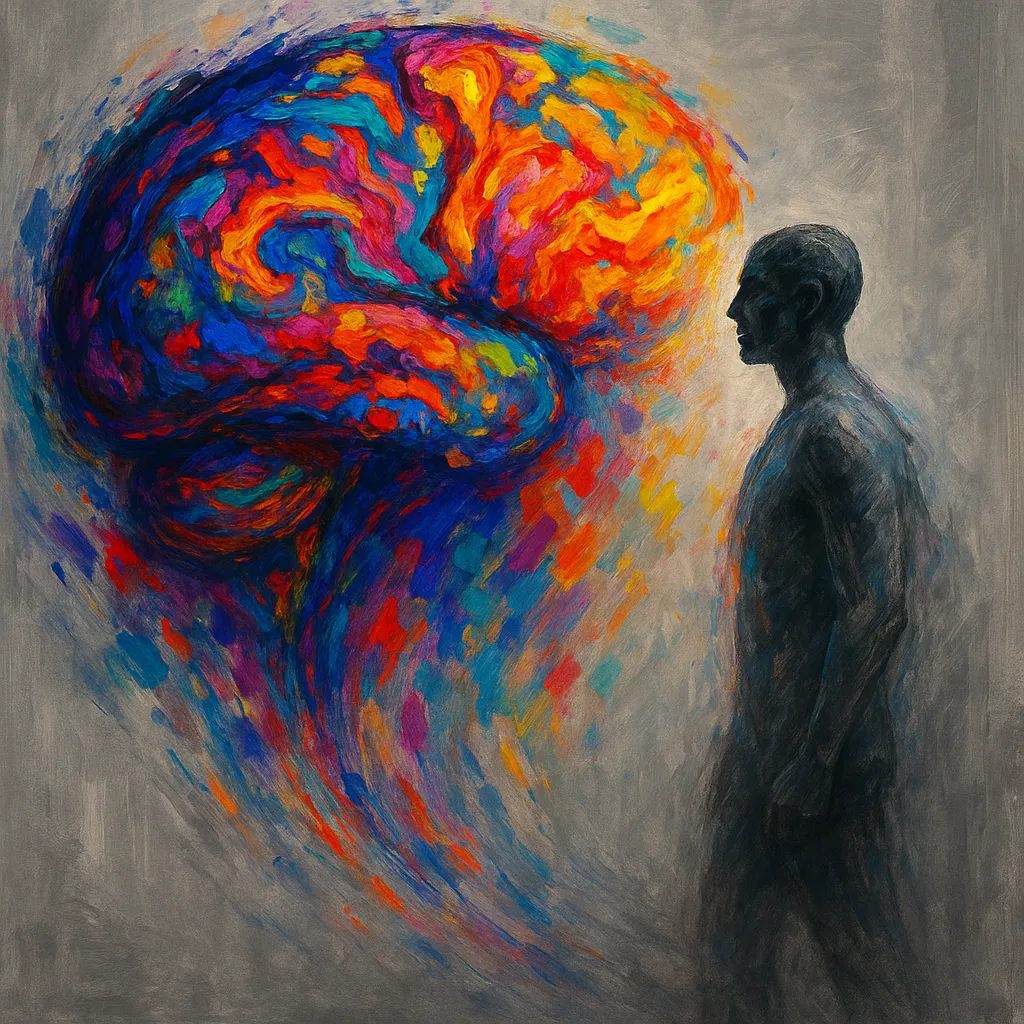Creativity Is Autistic — Not a Side Effect or Misdiagnosis
 I’ve never been diagnosed with ADHD.
I’ve never been diagnosed with ADHD.
And yet, I am creative.
I write haiku, free verse poetry and short stories. I solve thorny work problems. I started playing guitar at age seven. I compose ambient music.
I see the world through a lens that doesn’t match the neurotypical mold — and that’s my creativity. It’s not borrowed or explained away by some other diagnosis. It’s my own. Autistic and undeniable.
So when a fundamentally flawed study out of the Department of Psychology at the University of Bath boldly asserts that “Enhanced Creativity in Autism Is Due to Co-Occurring Attention-Deficit/Hyperactivity Disorder,” it isn’t just wrong — it’s erasure.
They want to rewrite our story and say:
“Your creativity doesn’t belong to you. It belongs somewhere else.”
That’s a lie dressed up in lab coats and jargon, a way to ignore the messy, brilliant, unmistakable reality of autistic minds that don’t fit neat diagnostic boxes.
Labels are tools — but only when they help people. When they’re used to fence us off, to assign our talents to other conditions, to erase our identities — then they become weapons.
The problem isn’t that some autistic people have ADHD. The problem is that creativity on the spectrum is often viewed through narrow clinical eyes that miss the full picture. They reduce us to symptoms or traits rather than seeing us as whole people with complex, nuanced minds.
Diagnosis isn’t destiny
People often think diagnoses define us. They don’t. Diagnoses are blunt instruments at best — categories made by humans who want to sort and label a messy, sprawling reality. Real people don’t fit perfectly into those boxes.
I don’t have ADHD. I’m autistic. That means my creativity isn’t a byproduct or a side effect — it’s core to who I am.
That matters because it pushes back against a persistent, harmful narrative: that autistic strengths are “really” explained by something else, that we’re incomplete without a second diagnosis.
That narrative is a form of erasure, a form of dehumanization.
It says, “If you don’t have that other label, you don’t truly have this gift.”
It’s an insult to every autistic person whose talents don’t fit the neat categories researchers want to assign. A fantastic example: An autistic friend of mine who spends most of every day inside his own world broadcasts a radio show that he has invented. It’s not on the radio. It’s simply him talking in a room with the voices of both host and guests, in different accents and inflections.
The erasure is real and harmful
This isn’t just an academic dispute about where creativity comes from.
It’s a battle over identity — over who gets to claim their talents and who gets sidelined.
When researchers strip autistic creativity away, they’re not just making a scientific claim.
They’re telling autistic people that their gifts are less valid, less real, less theirs.
They’re making a clinical argument that translates into cultural harm — fueling stereotypes that autistic people lack creativity or that our differences must be explained away.
The research system sidelines autistic voices
One of the deepest problems and the reason we seem to be stuck spinning this hamster wheel of misunderstanding is that autistic people are often excluded from research about autism.
Research on creativity rarely involves autistic people in design or interpretation. The questions asked, the methods used, the conclusions drawn — all too often come from neurotypical perspectives with neurotypical assumptions.
That means we get studies that overlook the nuance, the lived experience and the very real ways creativity manifests on the spectrum. I can’t count the number of times someone has told me, “I never thought about it that way. Jaime.”
Quantitative tests and behavioral measures are blunt tools that cannot capture the richness of autistic creativity. Creativity isn’t just measurable outputs — it’s a way of being, a way of thinking, a way of engaging with the world.
When studies ignore that, they produce partial, misleading and ultimately harmful results.
Creativity on the spectrum is real, varied, and vital
Autistic creativity doesn’t look the same in everyone. It’s not a single trait or ability. It expresses itself in countless ways:
- Deep focus on special interests that can produce incredible knowledge or art
- Sensory and perceptual differences that inspire novel expression
- Nonverbal communication and problem-solving that defy typical frameworks
These expressions are not deficits or accidents. They challenge conventional ideas about intelligence, value and even autism itself.
Why this matters to me — and to us
I bring my own mind as living proof that autistic creativity is real and whole.
I refuse to let anyone claim it’s “not really” autistic because of co-occurring conditions I don’t have.
Every autistic person deserves recognition for their strengths on their own terms — not through the filter of other diagnoses.
What needs to change
We need autistic-led research that centers lived experience and celebrates complexity. We need studies that listen first and don’t just observe. We need frameworks that uplift and don’t erase.
Until then, studies that try to pin autistic creativity on something else do more harm than good.
They reinforce stigma. They erase identity. They silence voices that deserve to be heard.
A call to action
To researchers and clinicians: I urge you to listen first, then research. True progress requires humility and partnership.
To autistic people: your creativity is yours — unbreakable, unique and valid.
To the world: autism is not a problem to be fixed or a talent to be ripped out of our hands and explained away. It’s a difference to be respected and embraced.
Final words
Creativity on the autism spectrum is not a side effect.
It’s not a symptom or a misdiagnosis.
It’s a vital, living part of our identity.
And I will not be erased. Shame on those who try.